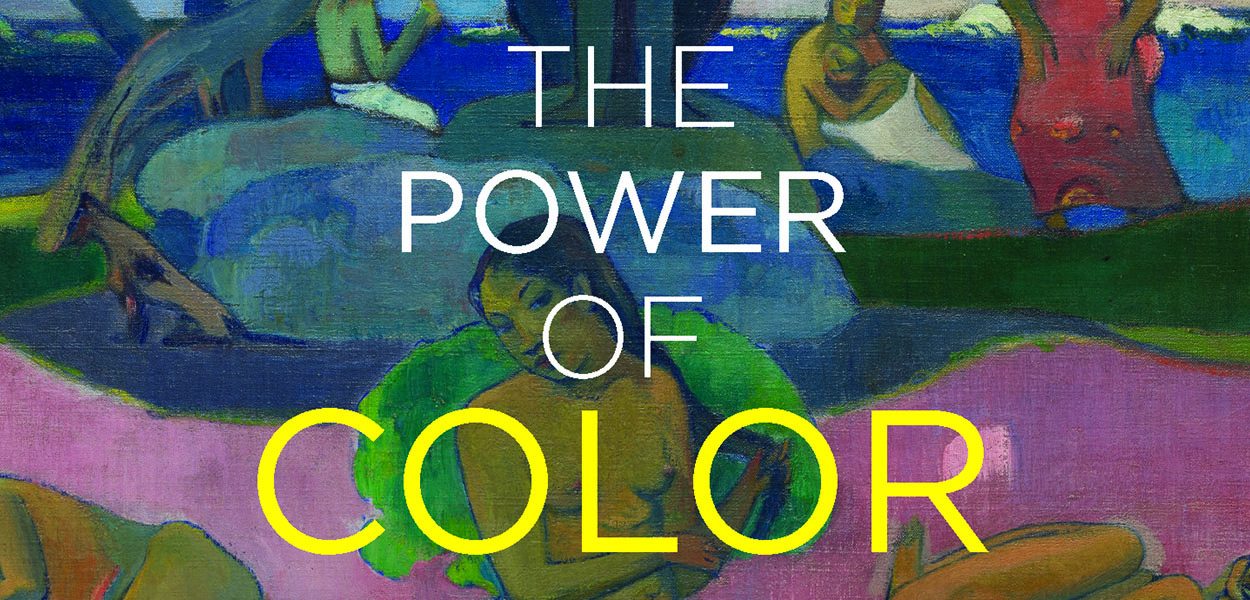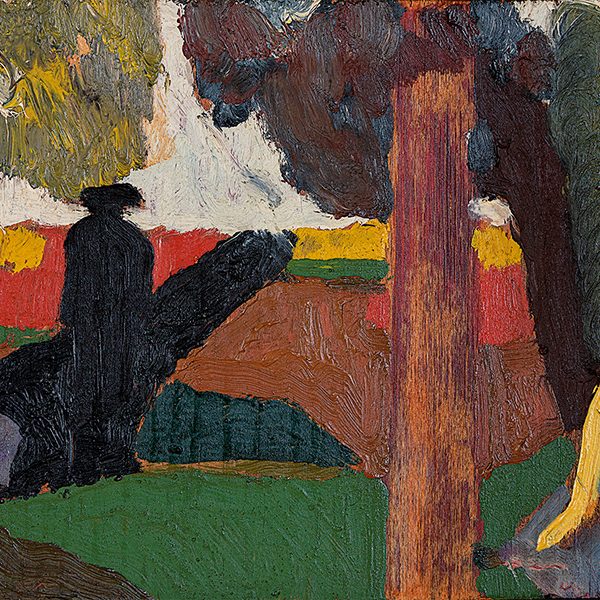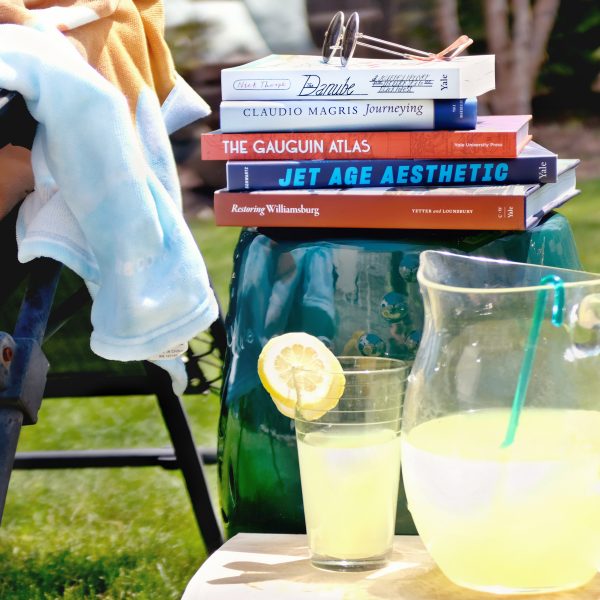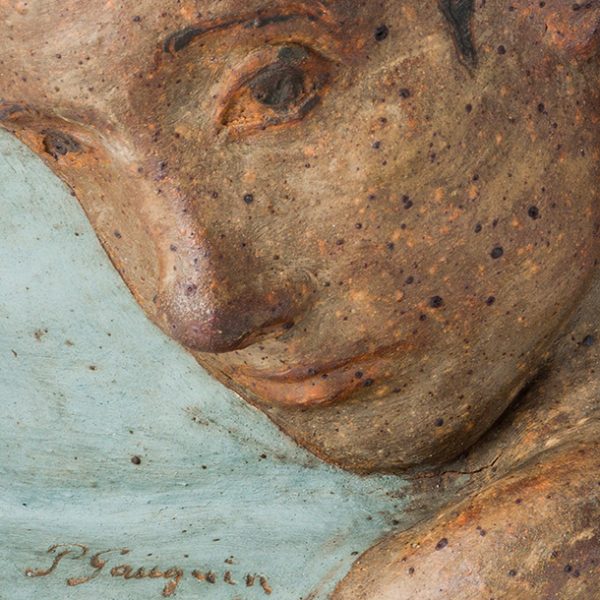The Bold Colors of Paul Gauguin
Marcia B. Hall —
Paul Gauguin sought to express his sense of spirituality in his paintings. Weary with the materialism of sophisticated European society, he escaped to the South Seas in his search. As a very young child he had spent five years in Peru, then as a teenager traveled the world in the Merchant Marine. Later, when his career in Paris as a stockbroker went south he turned increasingly to his painting. After stints in Martinique and Brittany and an eventful autumn in Arles with Vincent van Gogh, he set off in 1891 for the French colony of Tahiti. He told the press: “I wish to live in peace and to avoid being influenced by our civilization. I only desire to create a simple art. In order to achieve this, it is necessary for me to steep myself in virgin nature, to see no one but savages, to share their life and have as my sole occupation to render, just as children would do, the images of my own brain, using exclusively the means offered by primitive art, which are the only true and valid ones.”
His painting materials had to be shipped to him from Europe. When he ran out of canvas he used burlap. Although Gauguin probably didn’t know it, the sixteenth-century painter Jacopo Tintoretto had made use of the wide range of textures available in his native Venice for sail making. Tintoretto found that a coarsely woven support served his needs for broadly painted works intended to be seen from a distance. Gauguin, who allowed the rough weave to show through his thinly painted layers, probably liked the ascetic feel the unpretentious fabric gave his paintings. Although he was urged to use more impasto, he claimed that he had to conserve his colors, but it is more likely that he preferred to abjure any opulence and cultivate an austere look, so that his lush colors could speak out more clearly. He had also to contend with the high humidity of the tropics, which meant that his layers took a long time to dry. He preferred a matte surface. The last thing he did was to wash the surface to remove any hint of gloss. He wrote home that he “always worried that his pictures will be ruined with this dirty disgusting varnish which picture dealers use.”[i]
In By the Sea, dated 1892, the year following his arrival, Gauguin shows two women seen from the back wading into the green blue sea. One already naked, the other removing her garment, they ignore the fisherman nearby. The painter is celebrating the leisure and the absence of shame in his South Sea Eden. A dark tree lies across the middle separating the water from the sandy beach in the foreground. Gauguin has discarded refinements of the artistic tradition. His figures are boldly outlined in dark blue, blocklike in shape, improbably modeled with streaks of unexpected color. His disregard for artistic convention is a metaphor for his rejection of the conventions of civilization.
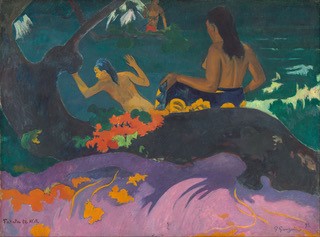
On the tree is a pile of red orange blossoms, the bounty of tropical nature. In the foreground is an explosion of colored shapes beyond explanation in terms of naturalism and far removed from anything available to the viewer on the European art market of the day. Here Gauguin seems to be expressing his sheer joy in color and the exuberance of nature. These people and their way of living in harmony with the natural world Gauguin finds more spiritually fulfilling than the regimented life and dogmatic religion of the civilized world he has put behind him.
Gauguin chose his pigments with care. He could not afford to waste them. He ignored the dark earths like umber and never used black. His paintings became brighter in the South Seas because he mixed in less white and fewer complementaries. Gauguin here juxtaposed complementaries—blue and orange, red and green, yellow and purple—to heighten the excitement and appeal of his image. In his preference for pure unmixed colors he resembles the painters of the early Renaissance, like Fra Angelico, who were also intending to give expression to the presence of the spiritual in the natural world with their brilliant, ornamental coloring.
He longed to be freed from the concern of marketing and selling his art, and from the constant worry of making ends meet. His dream was answered in his final years when the dealer Ambroise Vollard offered him a monthly stipend in exchange for pictures. Gauguin never again returned to Europe and died in the South Seas in 1903.
Marcia B. Hall is Carnell Professor of Renaissance Art at the Tyler School of Art at Temple University.
Further reading:

[i] Writing to de Monfreid 27 February 1901, CHRISTENSEN, C. (1993). The Painting Materials and Technique of Paul Gauguin. Studies in the History of Art. 41, 62-103.























